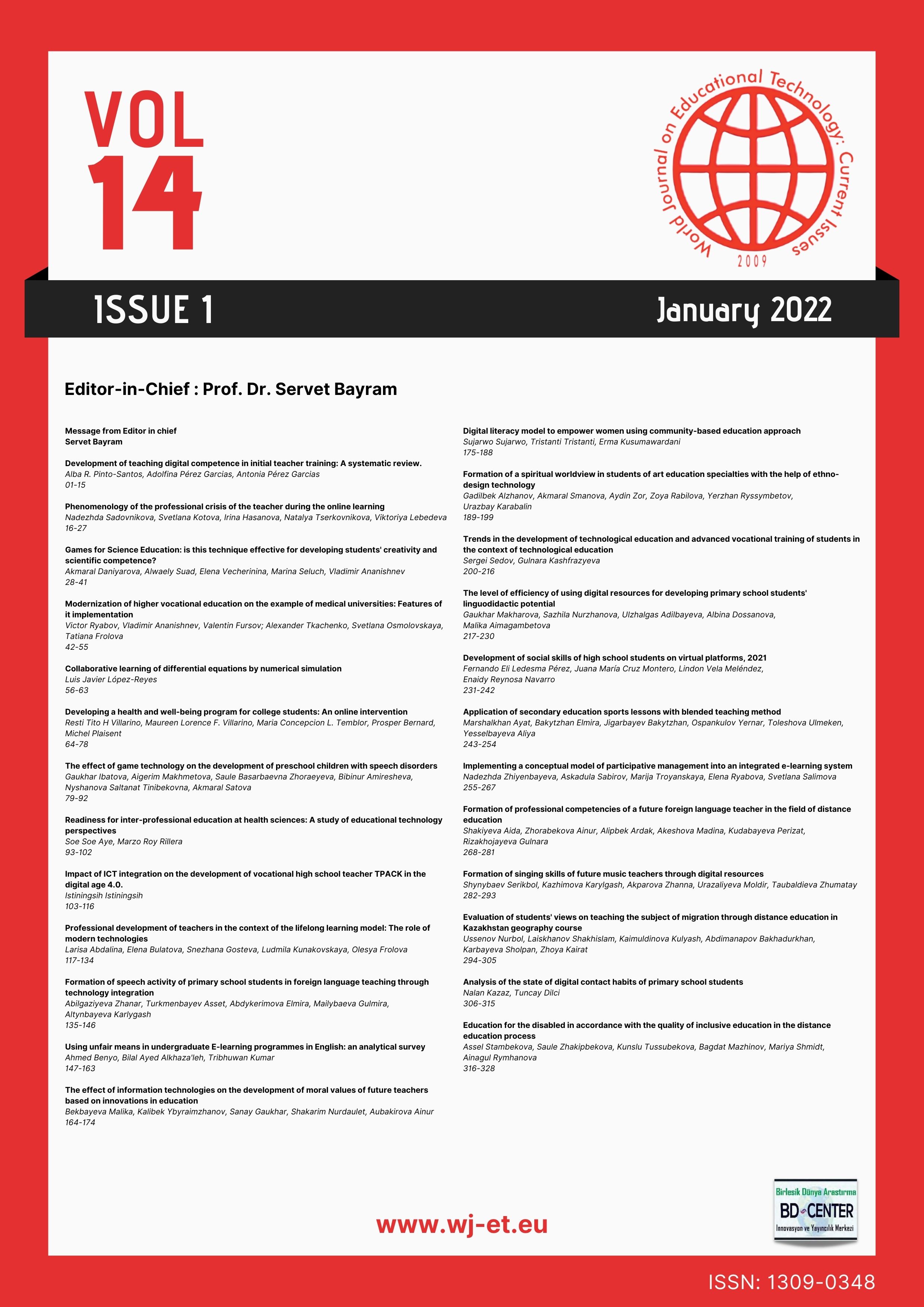The effect of game technology on the development of preschool children with speech disorders
Main Article Content
Abstract
The purpose of the article was to analyze the psychological and pedagogical conditions of word-formation skills for Kazakh-speaking preschool children with speech disorders on the basis of learning theories and contemporary approaches. To achieve the set aim, we have studied psychophysiological peculiarities of preschool children with speech disorder. We have allocated the most significant learning theories and approaches, which promote the assimilation of word-formation. We have come to understand that the indicators of speech development of many modern Kazakh-speaking preschoolers do not correspond to the age norm, which is influenced by word-formation operations. For Kazakh-speaking preschool children with speech disorders it is rather difficult to distinguish elementary forms as the original word, consisting of a stem and a derivative by including diminutive-affectionate suffixes. The driving forces of word-formation development of Kazakh-speaking preschoolers with speech disorders are contradictions that arise in connection with the development of a number of its needs. It should be pointed out that game technology is considered as the most powerful pedagogical condition in the development of Kazakh-speaking preschool children with speech disorders.
Keywords: Kazakh-speaking preschool children, psychological and pedagogical conditions, learning theories, approaches, word-formation, speech games
Downloads
Article Details

This work is licensed under a Creative Commons Attribution 4.0 International License.
World Journal on Educational Technology: Current Issues is an Open Access Journal. The copyright holder is the author/s. Licensee Birlesik Dunya Yenilik Arastirma ve Yayincilik Merkezi, North Nicosia, Cyprus. All articles can be downloaded free of charge. Articles published in the Journal are Open-Access articles distributed under CC-BY license [Attribution 4.0 International (CC BY 4.0)].
Birlesik Dunya Yenilik Arastirma ve Yayincilik Merkezi (BD-Center)is a gold open-access publisher. At the point of publication, all articles from our portfolio of journals are immediately and permanently accessible online free of charge. BD-Center articles are published under the CC-BY license [Attribution 4.0 International (CC BY 4.0)], which permits unrestricted use, distribution, and reproduction in any medium, provided the original authors and the source are credited.
